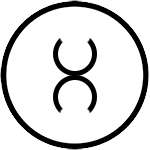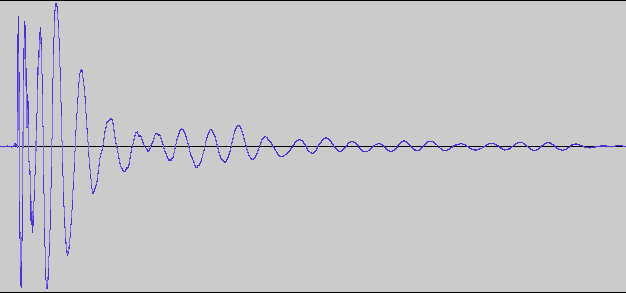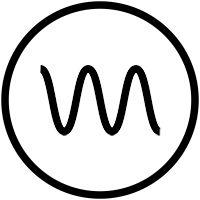
TyTe explores what FORCING a sound means, why it matters, and how it makes a difference.
Something that beatboxers do naturally, without thinking about it, is forcing a sound. But what is forcing and how does it work?
Forcing a sound makes it louder and punchier. It works on plosive sounds like the English letters b, p, and k, as well as all the other non-language plosive sounds that beatboxers make.
Take, for example, this bilabial plosive.

It is made by stopping the air between the lips and suddenly releasing it. It is the basis of the English letter b and sounds like this:

Now… if we force the sound – shown by adding the Forced effector, it looks like this:

And sounds like this…

In fact, it becomes a much better sounding kick drum – one we call the the Classic Kick.
So what is happening exactly?
We force the bilabial plosive by building up the pressure and squeezing the air out over a very short period of time. When we do this it makes a vibration or mini-oscillation. That’s why the Forced Effector symbol is a zigaggy line.

You can see the difference between the two sounds by looking at their waveforms.
Here is the bilabial plosive (b sound)…

And here is the forced bilabial plosive…

Can you see the mini oscillation produced by forcing the sound?

The mini oscillation does two things… Firstly it creates a sub-frequency making the sound lower and bassier. It also makes the sound louder.
Nearly all plosives can be forced and forcing sounds is what makes beatboxing sounds unique and different to sounds typically used in speech and language.
Now you know how to force sounds, perhaps try it on other sounds you make?
In this blog post we’re talking about oscillations, and discover why lip rolls aren’t lip rolls and inward drags aren’t inward drags. Hold on tight, you’re in for a bumpy (or should that be oscillating) ride!
I realise it’s probably too late. In English we have a phrase – “shutting the barn door after the horse has bolted.” In other words, if everyone calls a beatboxing sound by the wrong name then there’s nothing I or anyone else can do about it. Does it matter? Yes! As a mad beatbox scientist, it matters a great deal. If beatboxing is going to be taught in schools and colleges, then it needs to be taught correctly. Perhaps, if enough of us start using the correct terms then we can convince millions of beatboxers to do the same…? Yeah, right.
When you make a lip roll or an inward drag, like this…

or this…

You are NOT making a roll or a drag (whatever that is). You are making an OSCILLATION.
An oscillation is when a plosive sound (like ‘b’ or ‘p’) is vibrated with a continuous flow of air.
To show that a sound is oscillated we use this special symbol. It’s the OSCILLATION EFFECTOR.

The oscillation effector can be applied to any plosive sound.
If we force a bilabial plosive, it becomes our Classic Kick Drum.
It looks like this…

And it sounds like this…

If we add the oscillation effector it looks like this…

And sounds like this…

When a drummer makes a drum roll she makes a short pattern of two or more individual sounds. So a roll is not a single continuous sound.
Rolls are one thing. Oscillations are another thing.
Although lip oscillations are the most commonly used oscillation in beatboxing, giving us those lush bass sounds, you can oscillate other plosives, fricatives and even the vocal chords!
If you vocalise and oscillate a labiodental fricative like this…

Then you get a siren sound like this…

And if you oscillate a ulvular plosive like this…

You get to sound like Predator!

Or vocalise it to become a Dalek!

Promise Uncle TyTe you will all be good boys and girls and start using the word oscillation from now on?
You can find all the sounds used in this blog post on BZZKTT. Have fun!
TyTe busts the myths surrounding what most beatboxers call Inward K snares. Are you ready for the truth?
Welcome to my first BZZKTT blog post!
I’ve been soooo busy developing the web app that I’ve hardly had time to sit down, stand back, and say, “Ooh. Nice!” Anyway… the topic of this first post is to tackle one of my bug-bears, the Inward K Snare.
When someone says to me that they make an Inward K Snare, I immediately roll my eyes and start to twitch. For starters, which one? There are about 50 different sounds that come under this blanket title! Yes, I know… I’m a pedant (some may use more derogatory words) but hey, I’m a mad beatbox scientist and this is what I do. Get over it.
It’ll be true that the beatboxer is making an Inward sound… and yes, it might sound like a ‘K’ but it is it really an Inward K Snare? Let’s find out.
Before we get onto the different methods, you need to know about plosives.
Plosives are sounds made by stopping and suddenly releasing air between two parts of the mouth anatomy. Think of them as ‘explosive’ sounds.
English letters such as b, p, d, t, and k are all made using plosives.
In Beatboxing we often force plosive sounds.
When we force a plosive we use lots of air pressure and create a short oscillation or vibration. This makes the sound louder and punchier.
This is the symbol we use to show a sound is forced:

The sounds we’re going to look at are all forced sounds.
You can make an inward ‘snare’ sound using the tongue and just about any part of the mouth anatomy. However, there are four basic methods used by beatboxers!
Here they are…

You can make an Inward sound between the tongue and the hard palate. This is the hard part of the roof of your mouth that extends down to above your upper rear teeth. You can use any part of your tongue and any part part of the hard palate to make this sound.
It sounds like this…

Sounds made between the tongue and the hard palate are called palatal sounds. Ha! I’m making you learn stuff.
Because palatal plosives sound more like clicks, we generally call them… er… clicks!

You can make an Inward sound between the top rear of the tongue and the soft palate. This is the soft part of the roof of your mouth.
It sounds like this…

Sounds made between the tongue and the soft palate are called velar sounds. Don’t ask me why. They just are.
As this is where, in English, we articulate the letter ‘K’ this is actually a true Inward K Sound. But… because it sounds more like a rimshot (where a stick hits the side of the snare drum) we generally call these rimshots!

You can make an Inward sound between the tongue and the cheek. Usually, when you do this you keep the tip of the tongue pressed against the Alveolar Ridge and make the plosive between the side of your tongue and your cheek.
It sounds like this…

Sounds made between the tongue and cheek are called buccal sounds. Why? Because it is quicker to say than “tongue-to-cheek sounds” and besides, it makes you sound like you know what you are talking about when you mention it at the dinner table.
This a snare used by just about every beatboxer and is what most people call an Inward K Snare. BUT… because it is not articulated where a ‘K’ is usually made, and because it sounds a bit more like a handclap, we call it a handclap! Genius!

You can make an Inward Sound between the rear of your tongue and your throat.
It sounds like this…

Sounds made between the tongue and the throat are called pharyngeal sounds. Pharynx is a posh word for throat and we are well posh!
I remember meeting the beatboxer Alien Dee back in 2003 and he showed me how to make this sound. At the time, my mind was blown!
Yes, it is possible to make Inward sounds with the tongue against the lips, teeth, alveolar ridge, and even the uvular! You can also make all these sounds breathing in (aspirated) and add other things like vocals too!
The sounds used in this lesson were the Fuzzbox Click, 606 clap, Inward Classic Rimshot, and the SKA Rimshot.
You explored Plosives and encountered the Forced and Inward effectors (oh and an Alveolar Stop too).